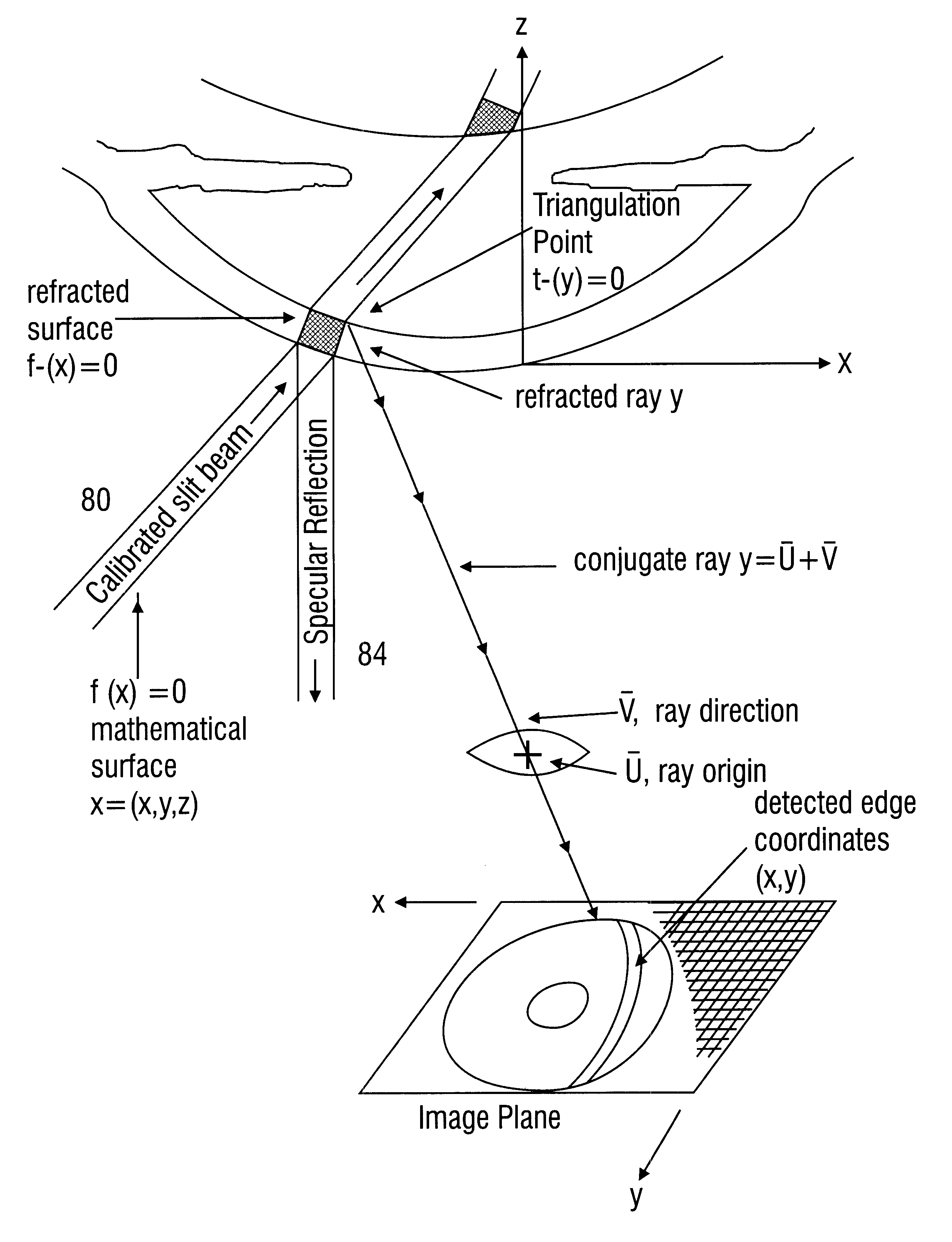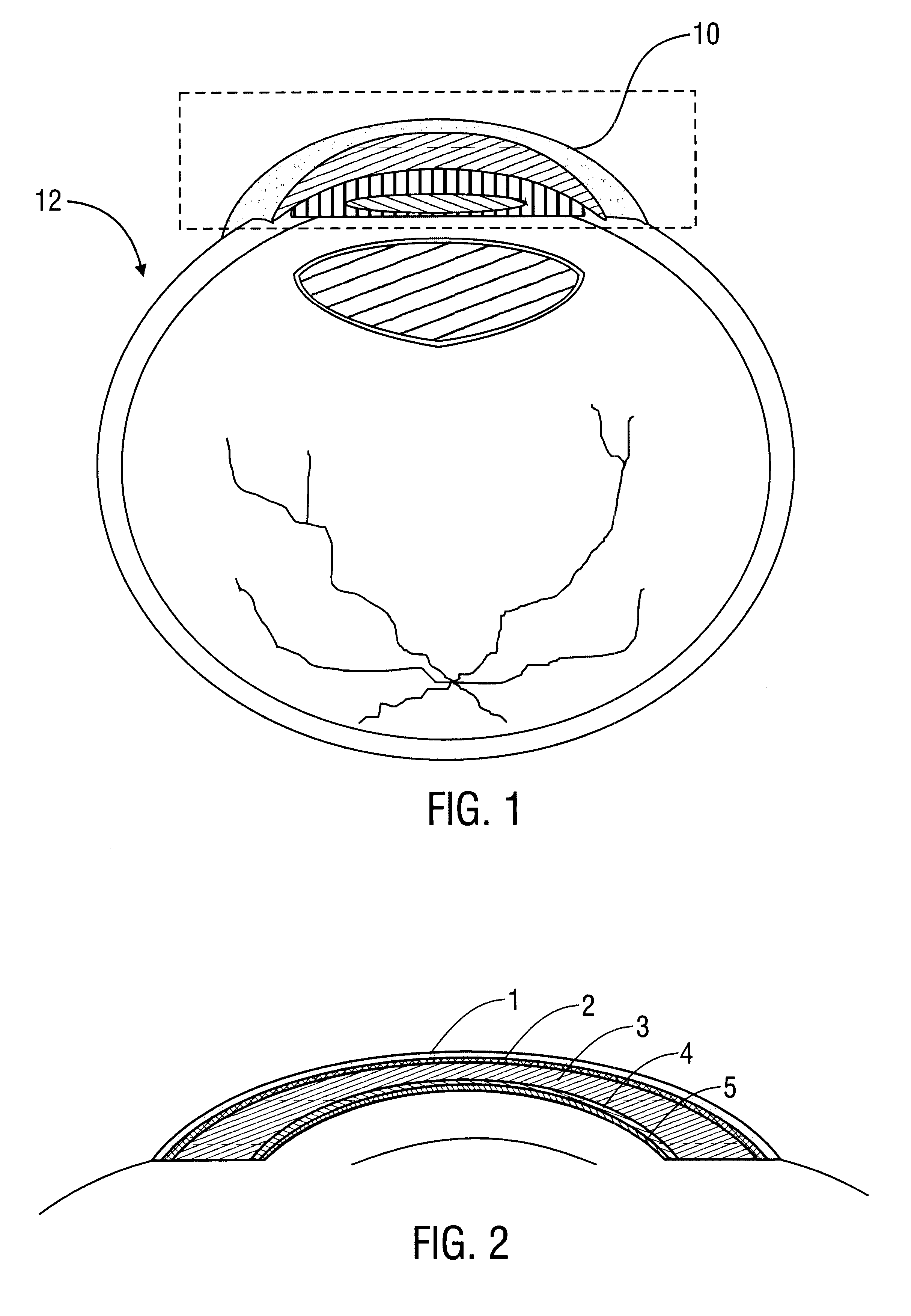Refractive laser ablation through topography
a topography and laser ablation technology, applied in the field of ocular surgery, can solve the problems of corneal defects, system not working in the same way for phototherapeutic keratectomy, and virtually impossible to correct corneal ectasia with either method
- Summary
- Abstract
- Description
- Claims
- Application Information
AI Technical Summary
Problems solved by technology
Method used
Image
Examples
Embodiment Construction
)
The surgical ablation depth control method and system of the present invention contemplate the step of mapping the anterior and posterior surfaces of a patient's cornea to obtain full pachymetry of the cornea. It is preferred that the mapping step be accomplished with an elevation-type corneal topography system, such as the ORBSCAN topography system depicted generally in FIG. 11.
The ORBSCAN system employs a calibrated video and scanning slit beam to non-invasively and independently measure 3-dimensional space (x, y, and z) locations of several thousand points on the anterior and posterior surfaces of the cornea. These locations are used to construct mathematical topographical maps of the elevation (z) versus the horizontal (x) and vertical (y) components for the two corneal surfaces. These mathematical representations have second-order derivatives, and are differentiated to calculate the slope and curvature at any point and in every direction along the corneal surface. Differences ...
PUM
 Login to View More
Login to View More Abstract
Description
Claims
Application Information
 Login to View More
Login to View More - R&D
- Intellectual Property
- Life Sciences
- Materials
- Tech Scout
- Unparalleled Data Quality
- Higher Quality Content
- 60% Fewer Hallucinations
Browse by: Latest US Patents, China's latest patents, Technical Efficacy Thesaurus, Application Domain, Technology Topic, Popular Technical Reports.
© 2025 PatSnap. All rights reserved.Legal|Privacy policy|Modern Slavery Act Transparency Statement|Sitemap|About US| Contact US: help@patsnap.com



